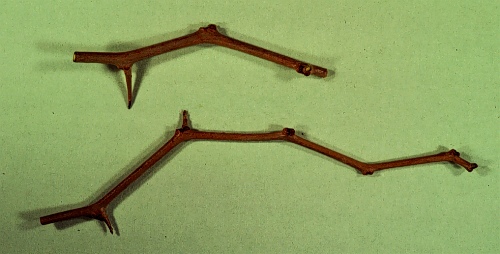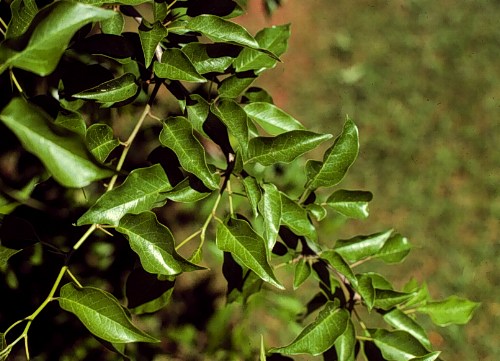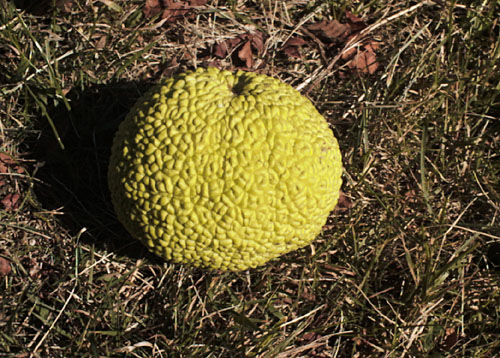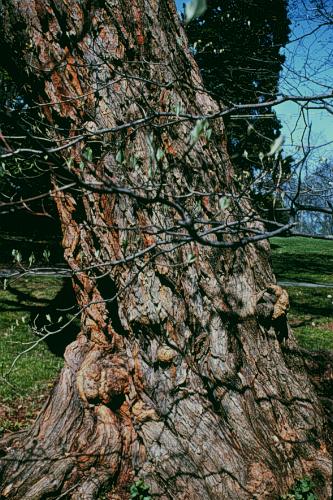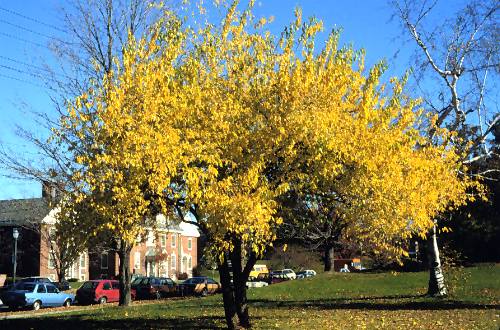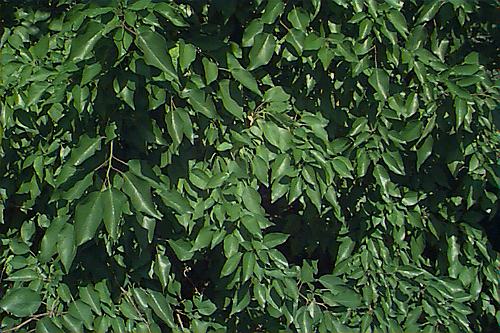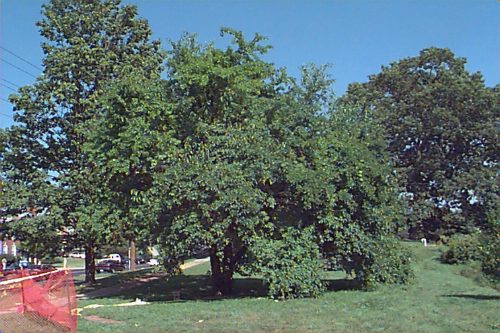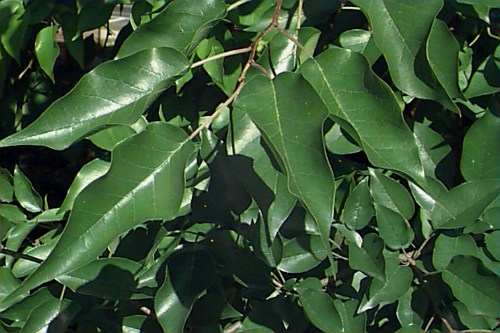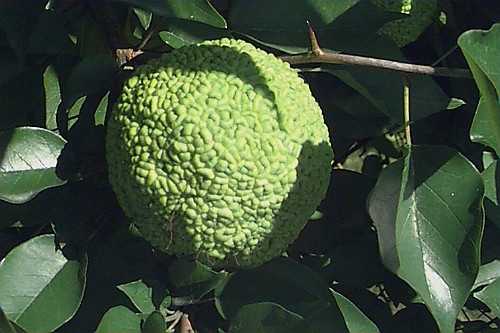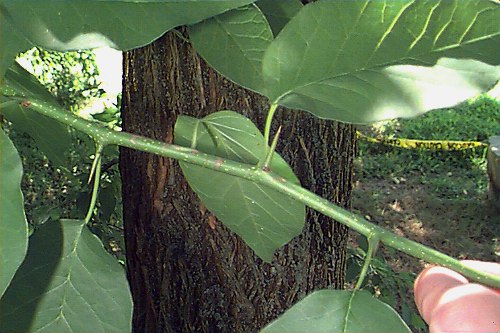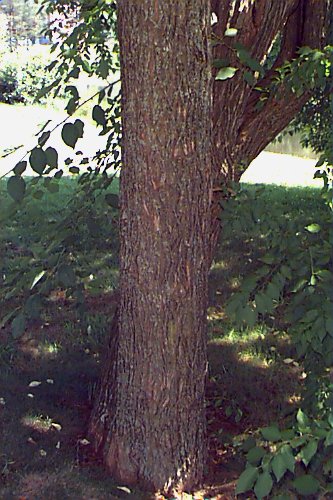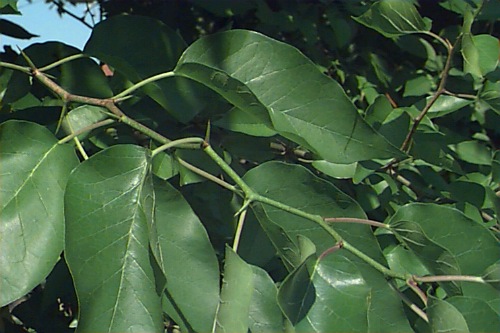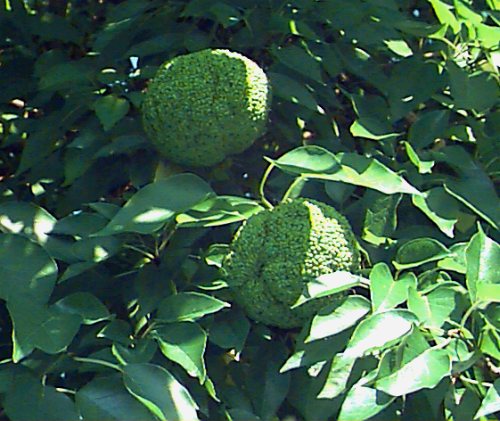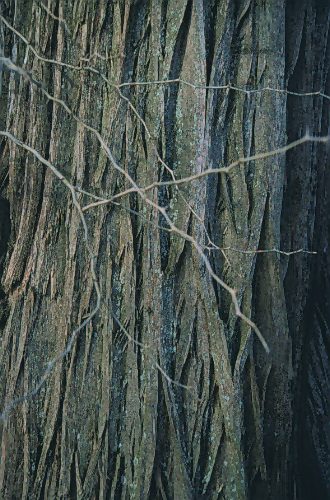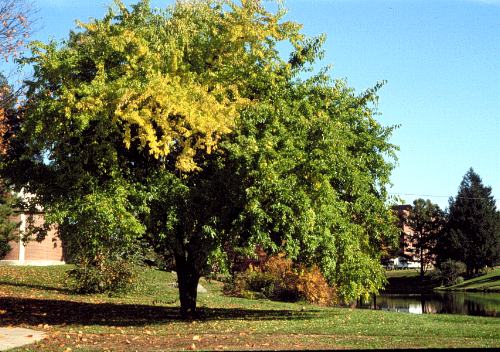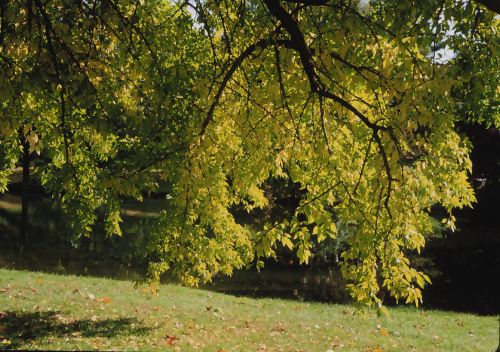Maclura pomifera
Osage Orange, Hedge Apple
Moraceae
ExpandHabitat
- native to Southeastern United States
- zone 4
Habit and Form
- a deciduous medium-sized tree
- 20' to 40 ' tall with and almost equal width
- rounded crown with short trunk
- branching is very dense and branches tend to overlap
- medium to coarse texture
- fast growth rate
Summer Foliage
- simple, deciduous leaves
- alternate leaf arrangement
- oblong leaf shape with a subcordate leaf base and pointed tip
- 2" to 5" long
- bright green leaf color
- when leaf is removed from stem milky sap appears at leaf scar
Autumn Foliage
- yellow-green to golden
- unreliable
Flowers
- dioecious
- blooms in June
- not ornamentally important
Fruit
- large, pale, yellow synocarp of drupes
- ripens in October
- litter problem
Bark
- brown coloring
- vertical fissures and scaly ridges
- inner bark is orange
- young stems are glabrous
- 0.5" long spines cover branches
- spines also produce milky sap when broken
- no terminal bud
- lateral buds are pressed into bark, imbricate
Culture
- easily transplant
- adaptable to most soil conditions
- full sun
- prune tolerant
Landscape Use
- for harsh conditions
- for interesting fruit
Liabilities
- spines cover stems
- fruit can be a litter problem
ID Features
- deciduous tree
- alternate leaf arrangement
- spines cover stems
- large yellow-green fruit
- no terminal bud
- inner bark is orange
- milky sap appears when leaves or spines are broken off
Propagation
- by softwood cuttings
- by seed
Cultivars/Varieties
There exists great interest in the selection of fruitless and/or thornless varieties of this hardy, tolerant native plant. To date, few commercial cultivars have entered the marketplace, but new forms may appear with time.
var. inermis - Perhaps a misnomer, as while some forms produce fewer thorns than others, the plants appear unstable in this respect. Several almost thornless selections have been made, and they are detailed in the following descriptions.
'Double O' - This male form produces no fruit, while the thorns are only apparent on young stems.
'White Shield' - A new discovery, this plant appears to be the most thornless selection to date. It is a vigorous grower with glossy, deep green leaves.
'Wichita' - This is an upright, spreading tree with a dense canopy. It is one of the most thornless cultivars available.
